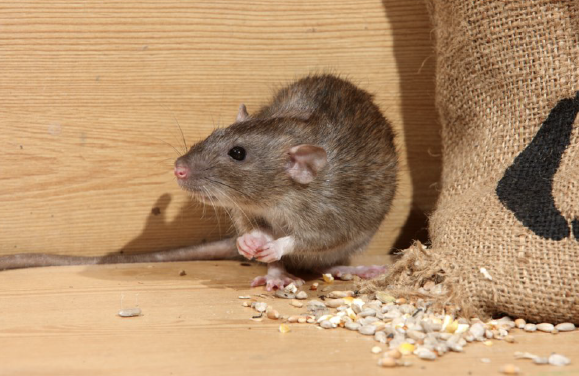Rare rash of rats rocks reaches of city
A rat epidemic has bit the Heritage city.
Rat sightings have been reported on an ever-increasing basis in several areas of the city within the last year, compared to no prior sightings in Nelson.
David White from WildsafeBC has informed City Hall of the proliferation of the rodent, and has been fielding calls from Nelsonites searching for rodent remedies to rid themselves of the unwanted pests.
The rat problem in Nelson has been growing over the last year, he said, with Fairview having been identified as the most affected area, with some evidence they are spreading into the Lakeside area and Uphill.
“They started in Fairview and they have established themselves in Fairview,” White said, noting areas such as Rosemont, downtown and parts of Uphill have yet to be afflicted.
In September the Village of New Denver in the Slocan Valley announced it was contending with a rodent problem, said village regional district representative and councillor Colin Moss in a report to the Regional District of Central Kootenay board of directors.
He said that the situation has gone beyond the ‘roof rats’ and black rats communities normally see to the Norwegian rat.
At the time he urged the regional district board to take a proactive approach to the problem and create a terminal rat apprehension program to deal with the current rat problem before it becomes an epidemic.
Backyard composting has been identified as a cause as the rats have been commonly seen around composters. As a result, White has asked the city to set standards for backyard composting, including asking people to use bins the rats cannot access.
“Rats are not native to the province and tend to thrive only in urban areas or where food is abundant,” like around composters, said White.
The first rat sighting was in August 2018 around Gordon and Second streets and since then White has compiled a database of recorded sightings.
After the first sighting White said he immediately did a door-to-door campaign — as well as another in September in Fairview — to determine the extent of the infestation. At the time, he said, it appeared to be restricted to the 900 block of Second Street.
But rats have a gestation period of three weeks and reach sexual maturity in five weeks, meaning a rat population can grow exponentially making eradication very difficult.
Just how the rat influx came to pass is not quite clear, said White, but if he had to guess he would suggest the rats came from Creston.
“I would say it probably has to do with the railway because the first reports initially came from Fairview, over near Second Street … not too far from the railway tracks,” he said.
Then they head up into the residential areas and seem to be spreading.
Not many people have welcomed the rats to Nelson since they are known to spread bacteria that can cause disease in humans such as pneumonia, salmonella, rat bite fever, among others.
“Rats can also cause property damage by gnawing holes in buildings, and raiding gardens,” said White.
What people can do
To address the problem or to prevent rats from visiting, garbage must be kept secure and rodent-proof containers must be used.
Pet food should not be left outside and bird feeders are not recommended.
Compost needs to be managed by adding dry grass and leaves and turning it regularly, or by utilizing a rodent-proof composter. Any hole into a dwelling should be patched using wire mesh and expanding foam.
— Source: WildsafeBC
To whom the rat tolls
There are many theories as to the spread of the rats, including a summer that has been conducive to fostering overall rodent population in the area.
People are reporting an increase in the mouse population and no doubt the ‘roof rat’ population as well.
A rat in our midst
Brown rats are considered the most common and “successful” species of rodent, according to pest control organization Orkin.
The species is present in every part of the world save for the coldest climates: northeastern Canada, Antarctica, Greenland and northern Russia.
Known as the Norway rat — also the common rat, street rat, sewer rat or wharf rat — the rodent did not originate from Norway. Instead, they have followed people to every major city and town, “bringing disease and pestilence along as they search for food and shelter.”
As a result, brown rats are able to carry a number of pathogens, including bubonic plague, typhus, Weil’s disease, toxoplasmosis and trichinosis.
“They can also damage and contaminate food with their waste as well as with the parasites which they carry,” read the Orkin website on pests control.
“Rats can cause electrical fires by chewing through wiring and insulation and causing a short circuit, a habit which may be responsible for as much as 50 per cent of farm fires.”
The brown rat will gravitate to damp environments.
— Source: https://www.orkincanada.ca/pests/rodents/norway-rats/


























